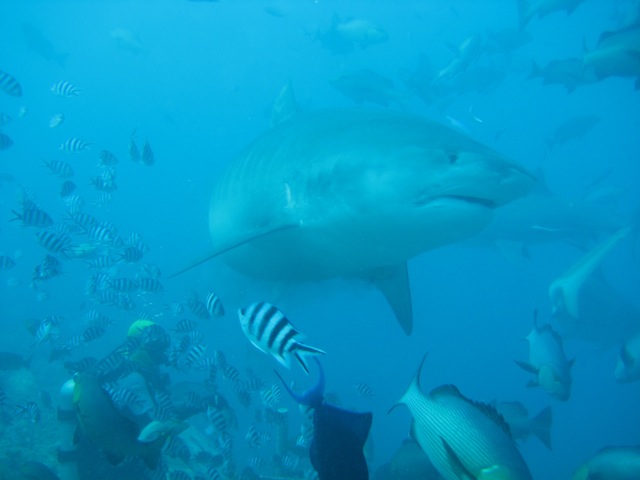
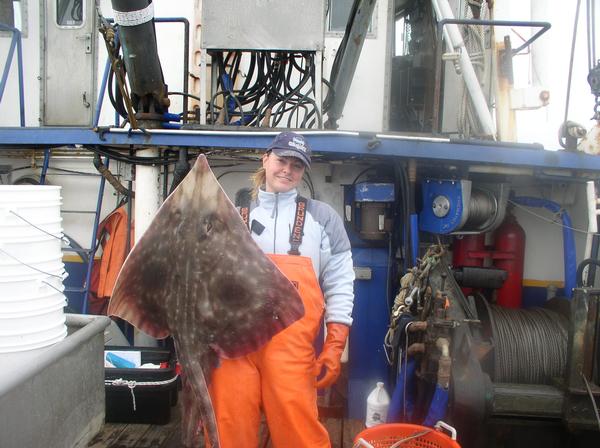
by Mariah Boyle, Ichthyology Lab
After an interval of time at the surface during my Fijian shark dive, suddenly, it’s time for the real thing – visitng the spot where the tiger shark (Galeocerdo cuvier) shows up. We drop down and lie on the seafloor this time, though we aren’t as deep. I get a spot on the end next to a divemaster and begin to watch another feeding. Bull sharks are coming in again, and then all of a sudden the water feels electric. We can all see something in the shadows, and we are all hoping and yet nervous that it is the tiger shark. The divemaster next to me nudges me and points.
Here goes nothing.
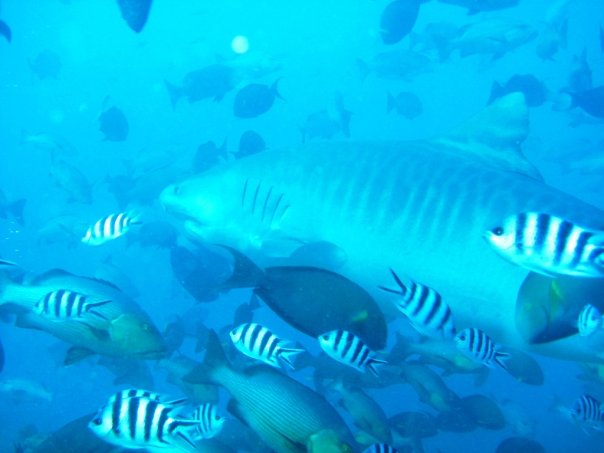
I clear my mask and its size comes into view, 4 or 5 meters in length. It is almost too big to seem real. Then it makes its appearance, swooping over our heads and checking us out. Apparently it likes our bubbles the divemasters have determined. The shark, a female named Scarface we learn later, cruises around and opens her giant mouth for fish, a mouth I’m sure I could have fit into very easily, scuba gear and all. The shark was never aggressive, although you could tell she owned the place, even the bulls waited for her.
On one of her last rounds she took a fish and came really close to the wall, coming within a meter of me, mouth first. On this dive I had my camera with me, and I snapped photos later that would scare me because they were so close, but at the time I felt nothing but calm and at peace with these animals. Like we knew our visit was just temporary and the sharks were happy with the small price of some fish.
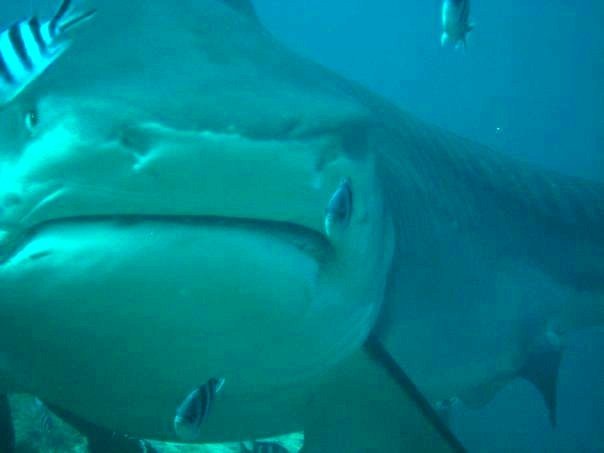
We surfaced, cheering out loud from the adrenaline and then hop up into the boat fast since the tiger is still beneath us somewhere, and we know we are still in her realm. On the way back the Divemaster tells us a story that went something like this: “One day the tiger shark, Scarface, showed up and she was agitated, angry, I could tell. She circled and circled above me and finally showed me the problem. There was a large metal hook in her mouth, right through the skin. She kept circling and so I knew what I needed to do. Scarface knows me, I’ve dove with her so many times, so I swam to her and put my hand on her mouth and stopped her, and I pulled out the hook.” The Divemaster goes to the front of the boat and pulls out a huge fishing hook, he keeps it in a box onboard as proof.
When deciding to go shark diving I had a lot of reservations, not only about the safety but about the fact that if I participated I was making a conscious decision to feed the sharks, to disrupt their natural patterns. In the end I’m glad I did the dive. I understand now more the power and beauty of these sharks. The divemasters say the sharks don’t come around every day, the tigers go missing for weeks at times, so they are still in their natural behavior, they still leave to mate and feed.
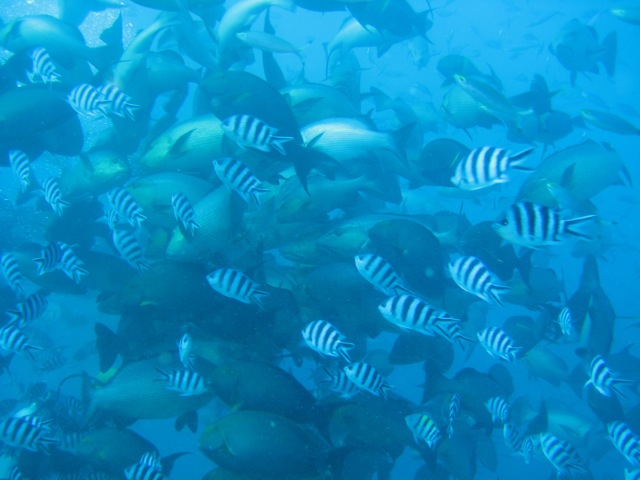
This opportunity has also provided the divemasters, all Fijians who believe they are protected from the sharks, the chance to intimately get to know these sharks and give us insight into their patterns. These divers can tell when a shark is pregnant; they know each shark by name. They have also started a tagging program for the bull sharks, to gain insight into their movement. While I didn’t feel the need to repeat the dive in Fiji, I think going once is a great experience. I don’t have a list of sharks to see and won’t be chasing them on a bunch of shark dives, but as our desire to see the world first hand and preserve the animals in it increases, we all need to decide where we stand on feeding or tracking or swimming with all animals. For me, seeing these animals once was enough to appreciate them more, I’ll never forget that dive – but from now on I will leave them to cruise the oceans on their own.

